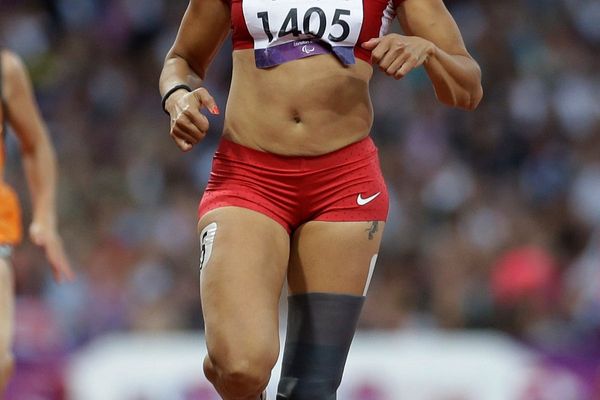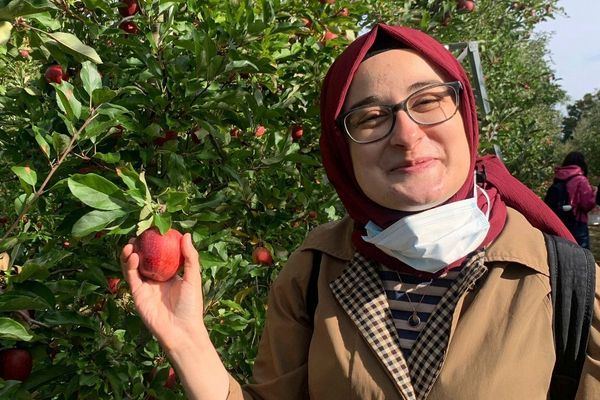
Years ago, when I wrote about new cafe openings every week, I had hot chocolates on a very regular basis. I love a good hot chocolate, but the hot chocolates I had then were rarely good. Recently, I haven’t been drinking much hot chocolate at all, so I hoped this taste test would be like my Suddenly 30 moment – after a disorientating journey to the future, I’d be greeted by a better world where everything was awesome.
The blind taste test involved 13 supermarket hot chocolates and seven friends. We made each hot chocolate based on the packet’s suggested recipe and scored them based on aroma, texture, taste and chocolatey-ness.
I did have my Suddenly 30 moment, but not the way I wanted. Just like in the film, the future is far from awesome – it’s full of lies. Despite packets promising indulgence, organic cacao and products crafted by master chocolatiers and famous chefs, these hot chocolates are not made for adults.
Most are barely even chocolate products.
They’re more like milky soft drinks, the kind of quality that comes from vending machines at car washes and train stations.
By the end of the taste test, I had a mouth ulcer, an unstable gut and a partner telling me she’d never drink a hot chocolate again. “Humans can achieve greatness, why do we settle for this shit?” she said.
Note, Oxfam Fair Fairtrade Drinking Chocolate, Avalanche 99% Sugar Free Drinking Chocolate, Jarrah Classic Hot Chocolate and Jasper Drinking Chocolate were included in the taste test but were cut from the article for brevity – none of them scored highly.
Best overall
Pana Organic Hot Chocolate Drink Blend, 200g, $9 ($4.50 per 100g), available at major supermarkets
Score: 7.5/10
After drinking 13 hot chocolates – many of which tasted like Coco Pops milk, it would have been easy to forget what cocoa is actually made from: a fermented, bitter bean with an incredibly complex flavour and aroma profile.
Pana was the only product we tasted which was a reminder of that fact. It was slightly bitter, complex, earthy and – I can’t believe I’m writing this – one of only two products to list cacao as the main ingredient (Three Blue Ducks was the other).
Simply put, it was by far the most chocolatey product of the day. At the end of the taste test, when we’d done the brand reveal, one reviewer said something like: “This is easily the favourite but I think some people just won’t like this, it won’t be sweet enough.” I gave a nod, like a father who’s just seen their child accidentally boot a ball through their neighbours’ window. I hoped it conveyed both sadness and acceptance.
Best value
Cadbury Drinking Chocolate, 450g, $6 ($1.33 per 100g), available at major supermarkets
Score: 5/10
Many of the hot chocolates were too weak. This was the opposite, which was a good and a bad thing. The good: it was chocolatey. The bad: it’s intensely sweet (per 100g it contains 76g of sugar) and has a stale, woody smell. As one reviewer wrote, “Like an Easter egg you find in September.”
The rest
Grounded Pleasures Exquisite Original Drinking Chocolate, 200g, $9 ($4.5 per 100g), available at Harris Farm
Score: 5.5/10
After the taste test, when all the other reviewers had left, I did a secondary test. I gathered all the products that were accused of being too weak or boring and, inspired by the Milo recipe of every greedy child, I brewed them with a far more generous powder-to-milk ratio.
My theory was some of the products, particularly this one, Three Blue Ducks and Jasper, had scored badly because of the stingy recipes on their packaging. I was right. All the reviewers’ descriptions – the burnt caramel aroma, the Milo-like flavour – were much more pronounced with a double dose of powder (Grounded Pleasures recommends two teaspoons a cup, which is nowhere near enough).
I predict with a more generous recipe, this would have scored a six or seven. But even with the double dose, it still lacked the depth, bitterness and character of Pana. Despite the promises of this being an “exquisite” experience and with gold embossed font and cacao fruit illustrations on the box, the contents were only 37% cacao.
Vittoria Original Chocochino Drinking Chocolate, 375g, $5.20 ($1.39 per 100g), available at major supermarkets
Score: 5/10
This tastes like every average cafe hot chocolate you’ve ever had – not particularly chocolatey, or as one reviewer wrote “overly sweet and boring”.
My guess is the weird sweet flavour comes from the ambiguous ingredient listed simply as “flavour”, perhaps a caramel-flavoured powder or oil. The hot chocolate is also a little thicker than its competitors, likely due to the addition of milk solids – you know, just in case someone out there makes their hot chocolates with water. Overall, it’s fine but I’d prefer more chocolate.
Lindt Hot Chocolate Made With Lindt Milk Chocolate, 210g, $10 ($4.76 per 100g) available at major supermarkets
Score: 5/10
I was betting on Lindt being one of the top scorers, if not the very top. This was based on the fact the only thing in the jar is shaved chocolate, and the assumption that the chocolate would be similar quality to Lindt chocolate blocks.
Instead it was like a wax museum imitation of Lindt chocolate – almost devoid of aroma, covered in white dust (likely crystallised sugar or fats separating from the chocolate) and with a faux-caramel flavour (a repeated theme of the day).
Mix it into milk, and it’s not going to get any better. One reviewer, who guessed this might be a white chocolate or caramel-flavoured powder mix, wrote it was “like an annoying friend’s account of a great story”.
Three Blue Ducks Organic Hot Choc, 200g, $9 ($4.50 per 100g), available from Coles
Score: 4/10
Some reviewers described this as weak and tasting like nothing, but others found the hint of chocolate and relative lack of sweetness gave it promise. This is exactly why it ended up in my second-round solo test, where it performed a lot better.
It certainly deserves better than a four, but considering the generous amount I used, it still tasted quite subtle. As the only two ingredients are coconut sugar and raw cacao, I’m blaming the rawness. There’s a reason no one makes coffee with raw coffee beans.
Dairy Fine Drinking Chocolate, 400g, $2.99 ($0.75 per 100g), available at Aldi
Score: 3.5/10
Every time I buy an Aldi product, I like to guess which brand Aldi has, let’s say, been inspired by. This was an easy one: Cadbury. Aldi products generally fare exceptionally well in Guardian Australia taste tests, but here, the Aldi brand wasn’t just a poor imitator; it was one of the worst products of the day.
One reviewer wrote “it smells like pencils”, another wrote “weirdly woody, like it’s been cooked with a wooden spoon and absorbed its flavour”. Others accused it of being gluggy, chalky and sickeningly sweet. Considering the main ingredient is icing sugar, at least I have an explanation for one of its faults.
Nestlé Aero Hot Choc, 185g, $7 ($3.78 per 100g), available at major supermarkets
Score: 3/10
The packet tells me to “enjoy a delicious cup of bubbly, chocolatey hot choc inspired by Aero” and “feel the bubbles”. I can excuse it for not being particularly chocolatey – it’s not like the Aero chocolate bar is the zenith of chocolate artisanry – but I cannot excuse it for not being bubbly.
When you have a drink that smells like a lolly factory, is gluggy from added thickeners, and tastes strangely salty, the very least it can do is fulfil the one thing the brand is known for.
Lovin’ Body Raw Cacao Drinking Hot Chocolate, 300g, $6.99 ($2.33 per 100g), available at Harris Farm
Score: 2/10
It annoys me when brands make excessive claims about the healthiness or purity of their product. Not because I don’t care about being healthy, but because the brands that do so almost always have the worst, weirdest-tasting products.
In this taste test two products fell in this category: the first was Avalanche’s 99% sugar-free drinking chocolate, where instead of sugar a trio of sweeteners – erythritol, stevia and glucose syrup – make it taste “extremely unnatural”, “like playdough” and “offensively sweet”, according to tasters.
The second was Lovin’ Body. The packaging claims my body will “be grateful for the amazing health benefits of raw and organic cacao” and promises a “pure and enjoyable” chocolate experience but it was the least chocolatey drink of the day.
I doubt raw cocoa beans can achieve the same flavour as roasted beans (the standard way to produce chocolate) and to make up for it, they’ve added “natural vanilla powder”, which tastes neither natural or like vanilla. Again, it’s more like caramel. Reviewers wrote “tastes like syrup and Fantales”, “smells like a white chocolate candle” and “this should not be called chocolate”.







